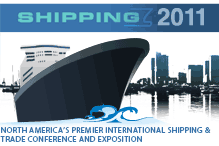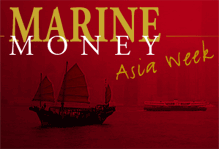
More to Come?
Last Friday, BW Gas conceded. Following a tepid response by the minority shareholders to the rights offering, the Sohmen family plans to take BW Gas private through its investment vehicle, World Nordic, which has recently increased its stake to 94.7%. Additionally, it is giving the minority shareholders, although not obligated to do so under Bermudan law, an exit opportunity by making an offer for the remaining shares.
Although the market for gas carriers has not been kind, the write-off of the bulk of its equity as a consequence of the change in Norwegian tax law was certainly a contributing factor. If the Norwegian court rules in its favor, as it likely should, this will be a classic example of winning the battle, while losing the war.
Going Concern?
On Monday, DryShips filed its annual report for last year, which included unqualified audit opinions from Deloitte, Hadjipavlou, Sofianos and Cambanis on the company and Ernst & Young (Norway) on its subsidiary, Ocean Rig. However both opinions assume a “going concern,” despite breaches in financial covenants, questions about its ability to meet its financial needs and negative working capital.
Unlike TBS, mentioned earlier, the company did not obtain its waivers prior to the issuance of the financial statements. The inability to obtain resolution is likely attributable to the multiplicity of lenders as well as the different prospects for the shipping and offshore businesses. Footnote 11 to the financial statements lists 13 current credit facilities. Dryships is the obligor on 12 of which 2 relate to Ocean Rig (share purchase and construction loan). The last is an Ocean Rig credit facility. While the spin-off of Ocean Rig sounds logical and appealing, the equity value in its assets and excess cash flows are too valuable to be let go by the DryShips lenders particularly in light of the DryShips’ guarantee of the Ocean Rig debt. In light of these complicated interrelationships an unwinding seems unlikely.
Managing Expectations
Over the weekend, TBS announced it had secured waivers of certain covenants with respect to its outstanding credit facilities with its syndicate of lenders led by Bank of America, its syndicate of lenders led by The Royal Bank of Scotland and its syndicate of lenders led by DVB Group Merchant Bank, as well as its loan agreements with AIG Commercial Equipment, Commerzbank AG, Berenberg Bank and Credit Suisse (the ” Financing Facilities “).
The company initiated discussions with its lenders to obtain waivers as a result of the current market conditions with a specific focus on the market value of vessels. The Financing Facilities were modified to provide a waiver through December 31, 2009 of loan-to-value and other financial covenants, provided that the company satisfies new covenants, including minimum end of month cash balances of not less than $40.0 million and a minimum ratio of EBITDA to interest expense. In addition, TBS prepaid all the principal installments that would have been due under the term loan facility this year. This reduced the total non-construction related debt to $$247.5 million.
The company is now in position to report its earnings with a clean opinion from its auditors.
Learning From the Master – Part II
On the other hand, Mr. Fredriksen’s investment in Golden Ocean Group (“GOGL”) is not faring as well, but is well on its way to a cure as Messrs Fredriksen and Troim continue to work their magic. It appears that they have restructured the company’s obligations while restoring the balance sheet back to health. And there was nothing mystical about it as all the players contributed by enduring pain in the short-term, hopeful of a recovery in the long-term.
With the assistance of Fearnley Fonds, DnB Nor Markets, Nordea Markets, First Securities, Platou Securities, Arctic Securities, and ABG Sundal Collier, the company issued 180 million (upsized from 165 million due to demand) new shares at a subscription price of NOK 4.10 per share resulting in gross proceeds of approximately $110 million of new equity. The offering was underwritten by Mr. Fredriksen’s Hemen Holdings, which was allocated 72 million shares. Post-offering, Hemen’s interest will remain basically unchanged at 40%.
Learning From the Master
Seadrill, last week, acquired an 80.2% interest in the Petromena NOK 2,000 million bond loan. The bond loan is secured by two new deepwater rigs that have scheduled deliveries from the Jurong shipyard in April and September this year. Seadrill has invested NOK 1,100 million in the bond loan, which gives a credit exposure of substantially less than US$400 million per rig.
The Company considers the position in the bond loan as an attractive low risk investment in assets where Seadrill has strong expertise and knowledge. Seadrill has, in the last year, taken delivery and successfully commenced operations for two rigs of similar design from the same yard and have, in addition, two further units under construction at the yard for delivery in 2010 and 2011. The investment in the bond loan will provide a direct yield of 14.2 percent and a yield to maturity of 26.2 percent. If a situation should arise where Petromena is not in the position to finance the rigs or repay the amounts due to the Bondholders in accordance with the existing loan agreements, Seadrill might be prepared to assist the projects with senior financing and operational expertise in order to maximize the recovery to bondholders.
Messrs. Fredriksen and Troim, despite their issues with Golden Ocean, don’t miss an opportunity and they make a good return while they wait.
Sayings of Captain Wei
At his press conference at CMA last week, Captain Wei, the President of COSCO, reminded us that while cash may be king, generally, in shipping, cargo is king. He is an unabashed spokesman for China and for globalization. The latter is essential to keep world trade growing, with his greatest fear being the reversion to protectionism. The world benefits when manufacturing is located at the nexus of the lowest cost of production. Based upon his discussion it is clear that the Chinese Government is carefully managing its economy and that COSCO, as you would expect, plays a key role. He told the story of being at a meeting with the Chinese Premier Wen Jiabao, who asked him about the omnipresent BDI and how COSCO was faring.
Captain Wei remains optimistic about the markets noting that for the first time in months, electric consumption in China increased 1.44%, which he suggests heralds the recovery of the bulk markets by the end of the year. He is not as hopeful with respect to containers, which are dependent on global trade.
We congratulate CMA on the selection of a great and worthy Commodore to enter its pantheon of shipping leaders. We enjoyed his inauguration as much as he did.
Life in the Equity Markets!
Knowing full well that when you need money you can’t get it, DHT Maritime, following quickly on the heels of Teekay LNG’s share offering earlier in the week, announced a secondary offering of it’s own on Thursday. Originally targeting the retail market, the offering was initially set at 6 million shares, but was priced to attract institutions resulting in the offer being upsized to 9 million shares as institutions joined in. The offering price was $4.35, a discount of approximately 8.8% from Thursday’s closing price. Net proceeds were approximately $37 million. After the offering, the stock traded down 4.6% on Friday closing at $4.15.
Concerned about the future of the tanker market, and in particular asset values, the company, in offering these shares, was exercising caution. The offering bolsters its balance sheet and provides a cushion at a time when tanker valuations may weaken as rates decline. This concern is compounded by the fact that valuations are difficult as few sales are occurring and a wide gap exists between bid and ask prices. Through the offering, the company has pre-empted the possible breach of the bank’s LTV covenant as well as a restriction on dividends also based upon that measure. Despite these concerns, DHT remains liquid with strong cash flow from a creditworthy counterparty.
Restructuring Debt Securities Under U.S. Law – Navigating the Economic Crisis in 2009
By Alexandros Aldous, Watson, Farley & Williams
During the upswing of the previous business cycle, an abundance of surplus capital led to a variety of financing opportunities such as “covenant light” bank loans and easy to price public debt instruments. Now, however, the credit crunch has affected all markets in a very powerful way, including the secondary market for debt securities. As exhibited in the accompanying chart, since March 2008, there has been a very significant decline in the value of both high-yield shipping bonds and high-yield bonds in general. Given the significant decline in secondary market prices for debt over the course of the last year, and the flat secondary debt markets, this could present an opportune time for companies with outstanding public debt to restructure their debt obligations. Since they may lack opportunities to sell their debt on the secondary market at a desirable price, bondholders may be willing to assist companies in restructuring their debt to reflect the present economic situation, thus ensuring the greatest possible likelihood that they will be repaid. The purpose of this article is to present restructuring options of debt securities under U.S. law. These restructuring options, which have been applied to high-yield shipping bonds in the past, may reappear with greater frequency in 2009 and beyond, as some companies that have bonds outstanding will find it desirable, or even imperative to restructure their obligations.
The Beginning or the End of the Shipping Investment Funds?
By Alvin Cheng, CEO of PST Management Pte. Ltd. (as trustee-manager of Pacific Shipping Trust)
No industry has been spared from the fallout from the collapse of the global financial markets, and the shipping industry is now feeling the head-on effects of the slowdown in world trade and the reduced demand for shipping services. Currently, there have already been a number of cases of newbuilding cancellations due to the adverse credit constraints and deteriorating market conditions. The trend is set to continue and, in fact, expected to increase in the months ahead.
The shipping industry faces problems created by the collapse of the global financial markets as well as the entry of many non-traditional investors in the past 2 years, which have led to the orderbooks for new ships reaching an all-time high and shipyard capacities have grown to an unprecedented level.
At the same time, the shipping boom has given birth to shipping investment funds (both private and listed) which have provided much of the capital required to supplement the traditional ship financing. With the equity markets now virtually closed to any form of new fund raising, except for the few tier-1 names and at a significant cost to the issuers, most of these funding sources are expected to be unavailable for the near term.
Backwards Through the Looking Glass
By Peter Shaerf, Managing Director, AMA Capital Partners and President NYMAR
Well, January 2010 could not have come fast enough…it seemed 2009 was the invention of the “Brave New World” — not so much Huxley’s but a whole new economic paradigm. Not a huge distance from the Great Depression, 2009 was the year we saw the Wall Street clown turn on his heels and run…to clown school! Or the downtown financiers move uptown and open a yogurt store (ill advised). Historically, one was even reminded of Ben Cohen and Jerry Greenfield who, rather than pursue the conventional careers prescribed by their parents, bought a $5 correspondence course in ice-cream making. The rest (“Ben and Jerry’s ice cream” – now a subsidiary of Unilever) is history. There is life outside the conventional walls, and 2009 seemed to be the year of self-discovery.







